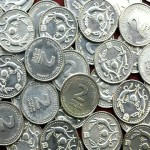Having reached session highs, right after the release of Australian consumer inflation, the Aussie slid to lower levels against the US dollar, following an official report to show Chinese preliminary manufacturing PMI slowing down.
AUD/USD came off a session high at 0.9317, recorded at 1:30 GMT, to trade at 0.9254 at 6:27 GMT, down by 0.46% for the day, marking its first decrease in four days.
Earlier today HSBC Holdings Plc and Markit Economics reported that the preliminary value of the Purchasing Managers’ Index in Chinese sector of manufacturing decreased at a faster than expected rate to 47.7 during July, after showing a value of 48.2 a month ago, marking its lowest reading in 11 months. Values below 50.0 are a sign that activity in the sector has shrunk. This results boosted concerns over the governments ability to meet its annual economic growth objective. Chinese authorities announced this week that they will not leave the set economic growth goal of 7.5% in 2013 and 7% during the next year. Chinese manufacturing PMI influenced the Australian currency, as China is Australias largest export partner.
“On the day, we seem to be at the low ends of the range with China-related concerns continuing to weigh on the Aussie,” said Callum Henderson, the global head of currency research at Standard Chartered Plc in Singapore, cited by Bloomberg. “On a six- to nine-month view, we continue to expect the Australian dollar to be lower.”, he also added.
Additionally, the Bureau of Statistics in Australia said that Consumer Price Index (CPI) in the country rose by 0.4% during Q2 compared to Q1, slightly mismatching initial estimates of a 0.5% advance. In annual terms, consumer inflation remained close to the average inflation target (the range of 2-3%) by the Reserve Bank of Australia, which is a benchmark for price stability, increasing to 2.4% during the second quarter of this year, while experts had expected an increase to 2.5%.
The yield on Australia’s benchmark three-year government note added four basis points to 2.63%. Traders see a 63% chance that the central bank of Australia will lower the overnight cash rate by 25 basis points from a record-low 2.75% on August 6th, down from 73% chance yesterday, according to Bloomberg.
Elsewhere, the Aussie was trading lower against the euro, as EUR/AUD cross advanced 0.35% to 1.4281 at 7:03 GMT.
Later in the trading day, the United States was expected to release data, regarding new home sales, a crucial indicator of the housing market situation in the country, as better than projected results may heighten the demand for the greenback.





